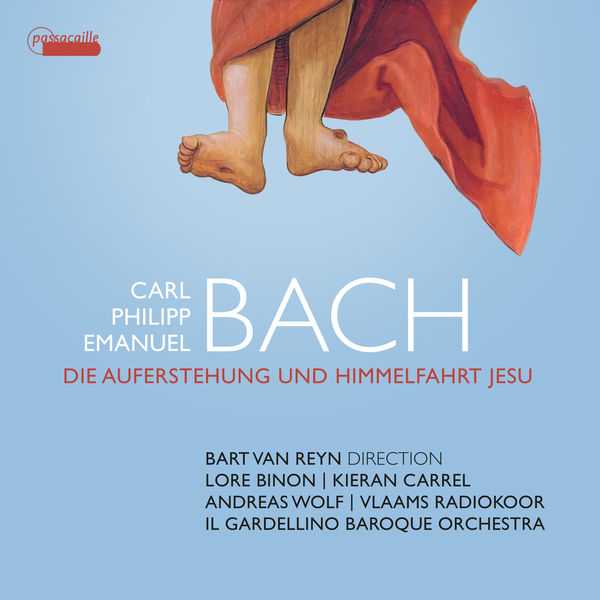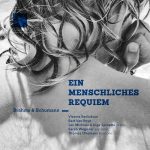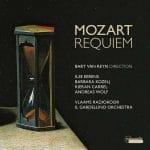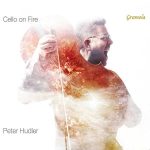

Composer: Carl Philipp Emanuel Bach
Performer: Il Gardellino, Kieran Carrel, Andreas Wolf, Lore Binon, Vlaams Radiokoor
Conductor: Bart Van Reyn
Format: FLAC (tracks)
Label: Passacaille
Catalogue: PAS1115
Release: 2022
Size: 1.34 GB
Recovery: +3%
Scan: yes
Die Auferstehung und Himmelfahrt Jesu, H. 777, Wq. 240
Part 1
01. No. 1. Einleitung
02. No. 2. Chor, “Gott, Du wirst seine Seele nicht in der Hölle lassen” (Chorus)
03. No. 3. Rezitativ, “Judäa zittert!” (Baritone)
04. No. 4. Aria, “Mein Geist, voll Furcht und Freude, beben!” (Baritone)
05. No. 5. Chor, “Triumph! Triumph! Des Herrn Gesalbter sieget!” (Chorus)
06. No. 6. Rezitativ, “Die frommen Töchter Zions” (Tenor)
07. No. 7. Aria, “Wie bang hat dich mein Lied beweint!” (Soprano)
08. No. 8. Rezitativ, “Wer ist die Sionitin” (Baritone)
09. No. 9. Duett, “Vater deiner schwachen Kinder” (Tenor, Soprano)
10. No. 10. Rezitativ, “Freundinnen Jesu, sagt” (Tenor)
11. No. 11. Aria, “Ich folge dir, verklärter Held” (Tenor)
12. No. 12. Chor, “Tod! Wo ist dein Stachel?” (Chorus)
Part 2
13. No. 1. Einleitung
14. No. 2. Rezitativ, “Dort seh’ ich aus den Toren” (Baritone)
15. No. 3. Aria, “Willkommen, Heiland! Freut euch, Väter!” (Baritone)
16. No. 4. Chor, “Triumph! Triumph! Der Fürst des Lebens sieget!” (Chorus)
17. No. 5. Rezitativ, “Elf auserwählte Jünger” (Tenor)
18. No. 6. Aria, “Mein Herr! Mein Gott!” (Tenor)
19. No. 7. Chor, “Triumph! Triumph! Der Sohn des Höchsten sieget!” (Chorus)
20. No. 8. Rezitativ, “Auf einem Hügel” (Tenor)
21. No. 9. Aria, “Ihr Tore Gottes, öffnet euch!” (Baritone)
22. No. 10. Chor, “Gott fähret auf mit Jauchzen” (Chorus)
Radical, daring and extremely refined: that’s how Carl Philipp Emanuel Bach saw his new path for the Oratorio, after his father’s Passions had marked the climax of the baroque era. Encouraged by his godfather Telemann and liberated from the yoke of the capricious Frederick of Prussia, he found himself in Hamburg with an audience hungry for new music. And he brought them his oratorios, no longer in churches but in concert halls, where he demanded the listener’s undivided attention for sudden changes of mood and colour.
Die Auferstehung und Himmelfahrt Jesu did indeed leave its traces: both Haydn and Beethoven showed great interest after a series of three performances conducted by Mozart in Vienna. Not only did it pave the way for Haydn’s oratorios, but there are also clear influences on the Pamina arias in Die Zauberflöte written a few years later. Carl Philipp Emanuel Bach wrote to his publisher Breitkopf, “I think this is the best work I have ever written”.



